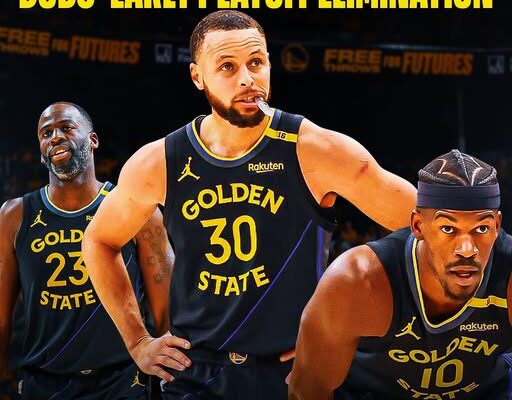Stephen Curry Wants to Join an Elite Group: Will He Become a 20-Season NBA Point Guard Legend Like Chris Paul and Kyle Lowry
Stephen Curry, widely regarded as the greatest shooter in basketball history, has carved out a Hall of Fame career with the Golden State Warriors. From his early days as a slender, underrated prospect out of Davidson College to becoming a four-time NBA champion, two-time league MVP, and the face of a basketball revolution, Curry’s resume is as decorated as any point guard to ever play the game. Yet even as he approaches his late 30s, Curry has set his sights on an ambitious new goal: playing 20 seasons in the NBA, a milestone very few point guards in league history have reached. Among the elite names who’ve either approached or are on track to hit this mark are Chris Paul and Kyle Lowry—both of whom have become elder statesmen of the league while continuing to contribute at a high level into their late 30s and early 40s. For Curry to join this rare fraternity, it will take more than just talent; it will require discipline, adaptability, and perhaps some luck with health. The question is: does he have what it takes?
The 2024–25 NBA season marks Curry’s 16th year in the league, all with Golden State. That means he would need to play four more seasons to reach the 20-season mark, a feat only a handful of point guards in NBA history have achieved. The nature of the position itself makes this difficult. Point guards are expected to handle the ball extensively, cover large portions of the floor, and initiate offensive schemes—roles that demand immense energy and mental acuity. Aging gracefully at this position isn’t easy, especially in an era where athleticism, speed, and perimeter defense are constantly evolving.
Chris Paul, for instance, is a player Curry has competed against and learned from over the years. Entering the 2024–25 season, Paul is beginning his 20th NBA campaign and remains a relevant contributor, albeit in a more limited role. Paul has had to adjust his game significantly, going from a franchise cornerstone in his prime to a veteran leader and secondary playmaker. What’s remarkable about Paul’s career is not just its length, but its consistency. Despite suffering numerous injuries over the years, he has maintained an elite understanding of the game, using his basketball IQ and surgical control of tempo to stay effective well beyond his athletic prime. Kyle Lowry, similarly, has extended his career into its twilight years through grit, leadership, and a willingness to accept lesser roles when necessary. Lowry’s path has included adapting to team needs, managing his minutes, and focusing on leadership both on and off the court.
For Curry, the journey to 20 seasons might look different from both Paul’s and Lowry’s. Unlike either of those players, Curry is still performing at a near-superstar level. In the 2023–24 season, he averaged over 25 points per game and continued to be the focal point of Golden State’s offense. His ability to shoot from anywhere on the court allows him to age in a unique way. Shooting, after all, is the one skill in basketball that tends to decline the slowest. Unlike explosive athleticism or lateral quickness, a jump shot is less dependent on age and more on mechanics and rhythm. Ray Allen, Reggie Miller, and Steve Nash all extended their careers primarily because they were excellent shooters, and Curry is on another level compared to them.
However, maintaining elite performance into a 20-year career requires more than skill. Physical durability becomes increasingly important, and Curry’s history here is mixed. Early in his career, he was plagued by recurring ankle issues that nearly derailed his potential. In recent years, though, he has mostly avoided major injuries, thanks in part to a strict fitness and recovery regimen. He works with personal trainers, emphasizes nutrition, and has adopted modern techniques like cryotherapy and load management to preserve his body. If he remains healthy and continues to manage his minutes effectively, there is no reason to believe he can’t extend his career deep into his 40s.
Another key factor is motivation. Many stars with Curry’s resume might be content to retire after 15 or so seasons, resting on their accolades. But Curry appears hungry for more. He has expressed interest in representing Team USA again, continuing to chase championships, and staying involved in the game as long as possible. His passion for basketball hasn’t dimmed, and neither has his competitive fire. Unlike some players who retire when their skills decline, Curry seems more like the type who will play until the game no longer brings him joy—regardless of his statistical output.
Still, joining Paul and Lowry in the 20-season club also depends on context outside of Curry’s personal control. The Warriors organization will have a say in his future, particularly as they transition to a new era. With Draymond Green, Klay Thompson, and others aging alongside him, the front office will need to make decisions about whether to rebuild or retool around their core. If Golden State chooses a full rebuild, Curry may have to choose between remaining loyal to the only franchise he’s ever known or seeking a new situation where he can continue to compete. It’s hard to imagine Curry in another uniform, but we’ve seen similar legends make those choices before—Paul with the Suns, Rockets, and Warriors; Lowry with the Heat after leaving Toronto.
The precedent for elite guards playing into their 40s is sparse but growing. John Stockton played all 19 seasons with the Utah Jazz and remained effective until the very end. Jason Kidd extended his career into his 40s and transitioned into more of a spot-up shooter and defensive specialist. Both players adjusted to their limitations and redefined their roles as they aged. Curry’s evolution will likely need to follow a similar trajectory, especially on the defensive end, where lateral quickness tends to fade with age. The Warriors may eventually need to shield him by pairing him with longer, younger defensive-minded players to preserve his energy for offense.
Curry’s unique style of play could actually help him defy aging more successfully than others. Unlike players who rely on isolations, pick-and-roll drives, or physicality, Curry operates best off-ball. His constant movement, quick cuts, and sharp screens are less taxing than driving into the paint on every possession. While his shooting ability will remain a constant, his ability to move without the ball—a skill he has honed better than perhaps any guard ever—can help him remain valuable long after his prime athletic years have passed.
Financially, Curry is also well-positioned to play 20 years. He remains one of the most marketable athletes in the world, and the NBA has every incentive to promote him as a symbol of longevity, loyalty, and greatness. Endorsements, jersey sales, and TV ratings follow him, and any team—whether it’s the Warriors or someone else—will see value in keeping him on the roster as long as he can contribute. That level of star power gives Curry leverage to call his own shot regarding retirement, which few athletes ever truly get.
What complicates the path slightly is the evolution of the league. The NBA of the late 2020s will look very different from the one Curry entered in 2009. Younger players are faster, more athletic, and highly skilled. The pace of the game has quickened, and the average three-point attempt per team has ballooned to levels unthinkable even a decade ago. While Curry helped usher in this era, staying relevant in it as it continues to evolve will require adaptation. If he’s willing to accept a diminished role—perhaps coming off the bench in his final seasons, a scenario that would have seemed outrageous just a few years ago—he can remain effective and extend his career.
There’s also a mental component. Playing 20 years in the NBA is a grueling task mentally and emotionally. The travel, the media scrutiny, the daily grind—it takes a toll. Players often speak of burnout long before their bodies give out. Curry’s cheerful demeanor and love for the game give him a strong foundation to weather this, but even he is human. Family considerations, business ventures, and legacy might eventually outweigh the desire to grind through another 82-game season.
Still, the evidence strongly suggests that Curry is on track to join the 20-season club. He’s still elite. He’s healthy. He’s motivated. And perhaps most importantly, his game is built to age well. If he plays four more seasons—even in a reduced role—he’ll not only reach that elusive number but likely do so while remaining impactful. And if he achieves it, he won’t just join Paul and Lowry; he’ll elevate the very idea of what a long career for a point guard can look like.
When historians write about the NBA’s greatest players, longevity is often used as a tiebreaker. Magic Johnson retired early. Isiah Thomas’s career was cut short. But players like LeBron James and Kareem Abdul-Jabbar are lauded not just for their dominance, but for how long they sustained it. If Curry becomes a 20-season point guard, it will cement his place in a rare category of greatness—where talent, durability, and love of the game intersect.
For now, Curry isn’t focused on retirement. He’s focused on winning, on leading, and on adding more chapters to a storied career. But the idea of him playing two decades in the NBA is no longer far-fetched—it’s increasingly likely. And when he does finally hang it up, the blueprint he’ll leave behind will inspire future generations of guards to not just aim for stardom, but for sustainability. In the end, Stephen Curry may not only be remembered as the greatest shooter of all time, but as the point guard who redefined how long greatness can last.



